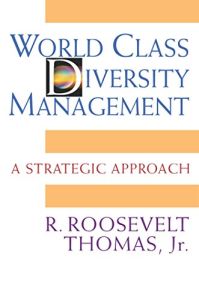Join getAbstract to access the summary!

Join getAbstract to access the summary!
R. Roosevelt Thomas, Jr.
World Class Diversity Management
A Strategic Approach
Berrett-Koehler, 2010
What's inside?
Managing diversity is more complex than adding and encouraging minority and female employees.
Recommendation
Managing diversity is more complex than increasing the number of your minority and female employees and encouraging them to advance. Diversity consultant R. Roosevelt Thomas Jr. advises that diversity means appreciating how people differ and engaging with those differences in ways that contribute to your corporate culture and bottom line. Whether you use his program or not, Thomas raises important issues and insights for managers and HR professionals. He asks a key question: Why confine your definition of diversity to race and gender when, instead, you can tap into every employee’s individual potential?
Summary
About the Author
Diversity expert R. Roosevelt Thomas Jr. created the American Institute for Managing Diversity and heads Roosevelt Thomas Consulting & Training Inc.


















Comment on this summary